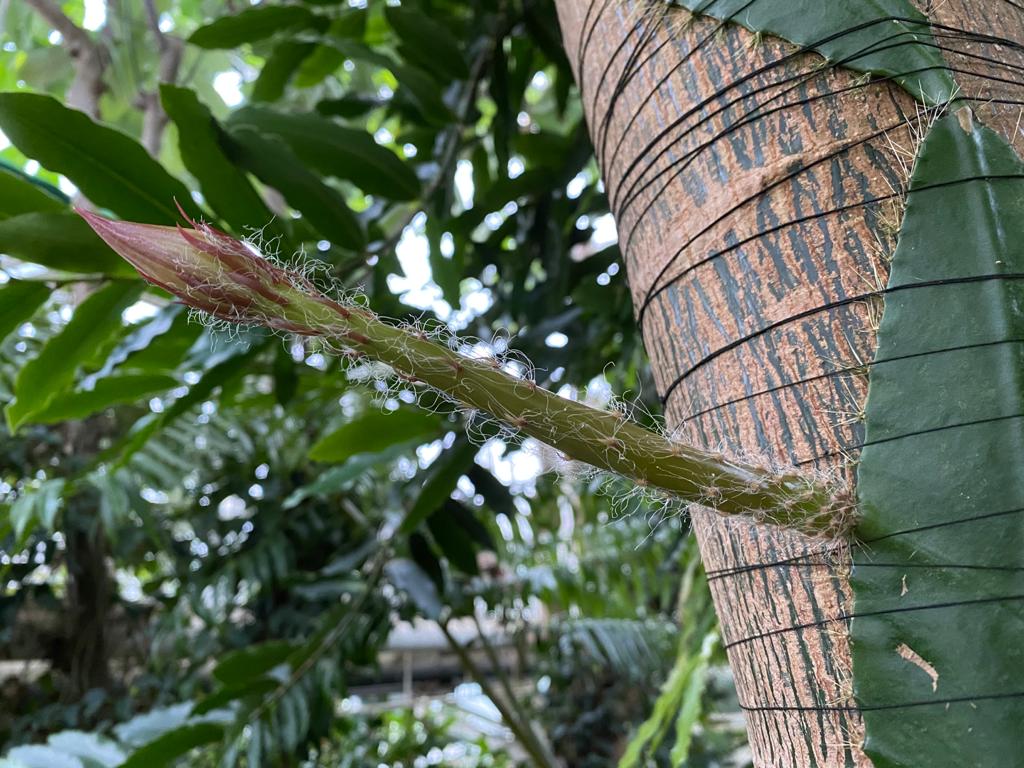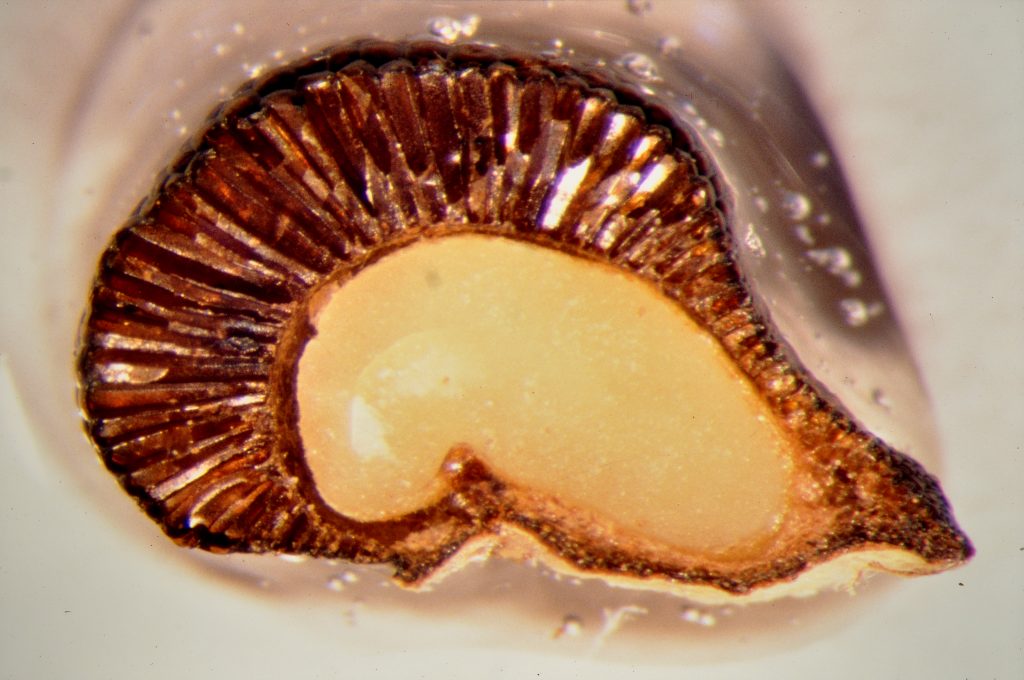1st time-lapse of rare moonflower blooming is stunning
It only blooms for 12 hours every year.

A rare Amazonian cactus that blooms only once a year for just 12 hours has successfully flowered in the U.K. for the first time, capturing the attention of hundreds of thousands of people around the world who watched the event online.
The moonflower (Selenicereus wittii) is a rather unusual cactus with a flattened stem that spirals around other trees like ribbons. It grows deep inside a single patch of rainforest in Brazil and flowers for a single night every year, so only a handful of people have witnessed the blooming process in the wild.
On Feb. 20, a moonflower at Cambridge University Botanic Garden (CUBG) bloomed and the entire process was captured on film for the first time. More than 400,000 people watched the livestream on the CUBG website and YouTube channel, according to the BBC.
"It's been absolutely overwhelming for us," Alex Summers, the CUBG greenhouse supervisor in charge of the moonflower, told Live Science. "Growing plants doesn't normally get this amount of attention and coverage."
Related: Naughty by nature: The most disgusting and deadly flowers
The blooming provided scientists with a rare opportunity to attempt to pollinate it, which could potentially allow them to grow more of these beautiful and bizarre cacti in the future.
Caught on camera
The moonflower has been in the CUBG collection since 2015 and has wrapped itself around a water chestnut tree (Eleocharis dulcis) in the tropical greenhouse. Unfortunately, the greenhouse has been closed for renovations during the COVID-19 pandemic, so the staff decided to set up a livestream and share the flowering cactus online.
Sign up for the Live Science daily newsletter now
Get the world’s most fascinating discoveries delivered straight to your inbox.
"In the case of this species, we are probably the only people to have captured time-lapse footage of it blooming," Summers said.
The livestream started on Feb. 9 after a growth spurt of the plant's flowering shoot, which reached 7.9 inches (20 centimeters) in length. CUBG scientists believed it would start blooming then, but it actually ended up growing to 11 inches (28 cm) long.

Eventually, 11 days later, the sepals — the protective petal-like structures surrounding the flower bud — began to part, indicating it was almost ready to bloom.
The blooming process began at 3 p.m. local time on Feb. 20, which was unexpected since the moonflower normally only blooms at night. Lighting for the livestream may have thrown the plant off its natural rhythm, the botanical scientists said.
"We used supplementary lighting for the webcam, and we think that probably had an effect on the plant's circadian rhythm," said Summers. A circadian rhythm is an organism's biological clock and is normally governed by natural light cycles.
The flower hit full bloom at 5 p.m. local time, when it reached a maximum diameter of 5.9 inches (15 cm). But by 3 a.m. on Feb. 21, the flower had already closed up.
"It's been amazing because we never expected for it to get the sort of attention it has got," said Summers. "People really stuck with it and it allowed us to talk to them about the plant and things related to it, like the importance of biodiversity."
Precise pollination
In the wild, the moonflowers must be pollinated by one of two species of hawkmoth (Cocytius cruentus and Amphimoena walkeri), which are the only insects with proboscises (tongues) capable of reaching the nectar at the base of the moonflower's long shoot, according to CUBG.
Because the moonflower blooms for such a short time, it must attract these hawkmoths as soon as possible. To do this, the flower gives off a strong scent, similar to honeysuckle or gardenia, which entices the moths. However, because of the flower's brief appearance that smell quickly turns sour.

"The smell quickly changes from something very pleasant to something quite foul." said Summers. "As the chemicals behind the scent break down, they turn into chemicals that are less pleasant smelling."
By the time the flower closed, Summers described the smell as "similar to a public urinal."
Hawkmoths pick up the moonflower's pollen while feeding on the nectar and transfer it to the stigma on another moonflower, which allows the fertilized moonflower to create seeds that can be dispersed and grow into new plants.

However, as there were no hawkmoths or other moonflowers for natural pollination to happen at the botanical garden, the researchers used a paintbrush to take the pollen produced by the flower and transfer it to the stigma on the same flower.
This is known as self-pollination and can happen naturally, but it is not an ideal way for a plant to reproduce.
"They're exactly the same as all organisms, they want to mix their genes with different individuals of their species and not themselves," said Summers.
Therefore, plants often have counter-measures in place to stop self-pollination. Summers doesn't know if that will be the case with this moonflower.
"We hope that the pollen will be able to pollinate it," said Summers. "But we don't hold out much hope that it will be successful."
Originally published on Live Science.

Harry is a U.K.-based senior staff writer at Live Science. He studied marine biology at the University of Exeter before training to become a journalist. He covers a wide range of topics including space exploration, planetary science, space weather, climate change, animal behavior and paleontology. His recent work on the solar maximum won "best space submission" at the 2024 Aerospace Media Awards and was shortlisted in the "top scoop" category at the NCTJ Awards for Excellence in 2023. He also writes Live Science's weekly Earth from space series.









